Much has been written—some by me—about how generative AI and large language models help developers. While that’s true, there are plenty of tech roles that stand to get a boost from AI assistance. I sometimes describe myself as a “recovering architect” when referring back to my six years in enterprise IT as a solutions/functional architect. It’s not easy being an architect. You lead with influence not authority, you’re often part of small architecture teams and working solo on projects, and tech teams can be skeptical of the value you add. When I look at what’s possible with generative AI today, I think about how I would have used it to be better at the architecture function. As an architect, I’d have used it in the following ways:
Help stay up-to-date on technology trends
It’s not hard for architects to get stale on their technical knowledge. Plenty of other responsibilities take architects away from hands-on learning. I once worked with a smart architect who was years removed from coding. He was flabbergasted that our project team was doing client-side JavaScript and was certain that server-side logic was the only way to go. He missed the JavaScript revolution and as a result, the team was skeptical of his future recommendations.
If you have an Internet-connected generative AI experience, you can start with that to explore modern trends in tech. I say “internet-connected” because if you’re using a model trained and frozen at a point in time, it won’t “know” about anything that happened after it’s training period.
For example, I might ask a service like Google Bard for help understanding the current landscape for server-side JavaScript.
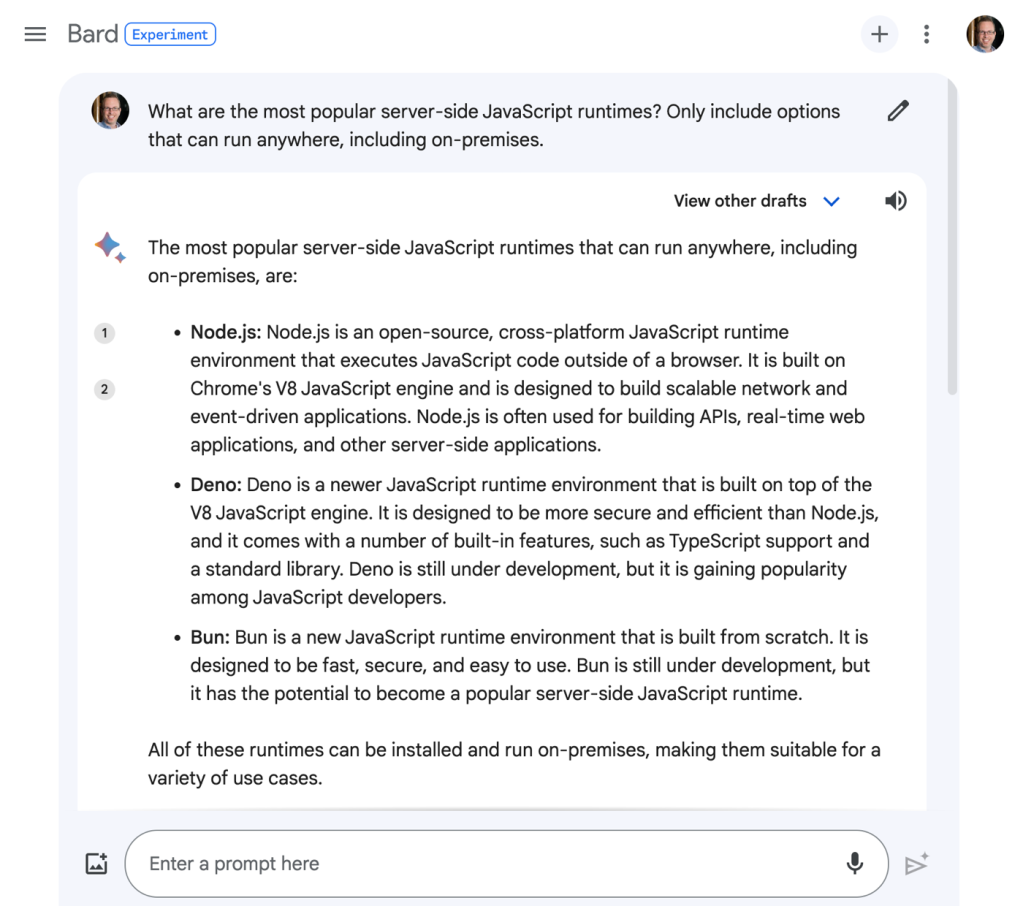
I could imagine regularly using generative AI to do research, or engaging in back-and-forth discussion to upgrade my dated knowledge about a topic.
Assess weaknesses in my architectures
Architects are famous (infamous?) for their focus on the non-functional requirements of a system. You know, the “-ilities” like scalability, usability, reliability, extensibility, operability, and dozens of others.
While no substitute for your own experience and knowledge, an LLM can offer a perspective on the quality attributes of your architecture.
For example, I could take one of the architectures from the Google Cloud Jump Start Solutions. These are high-quality reference apps that you deploy to Google Cloud with a single click. Let’s look at the 3-tier web app, for example.
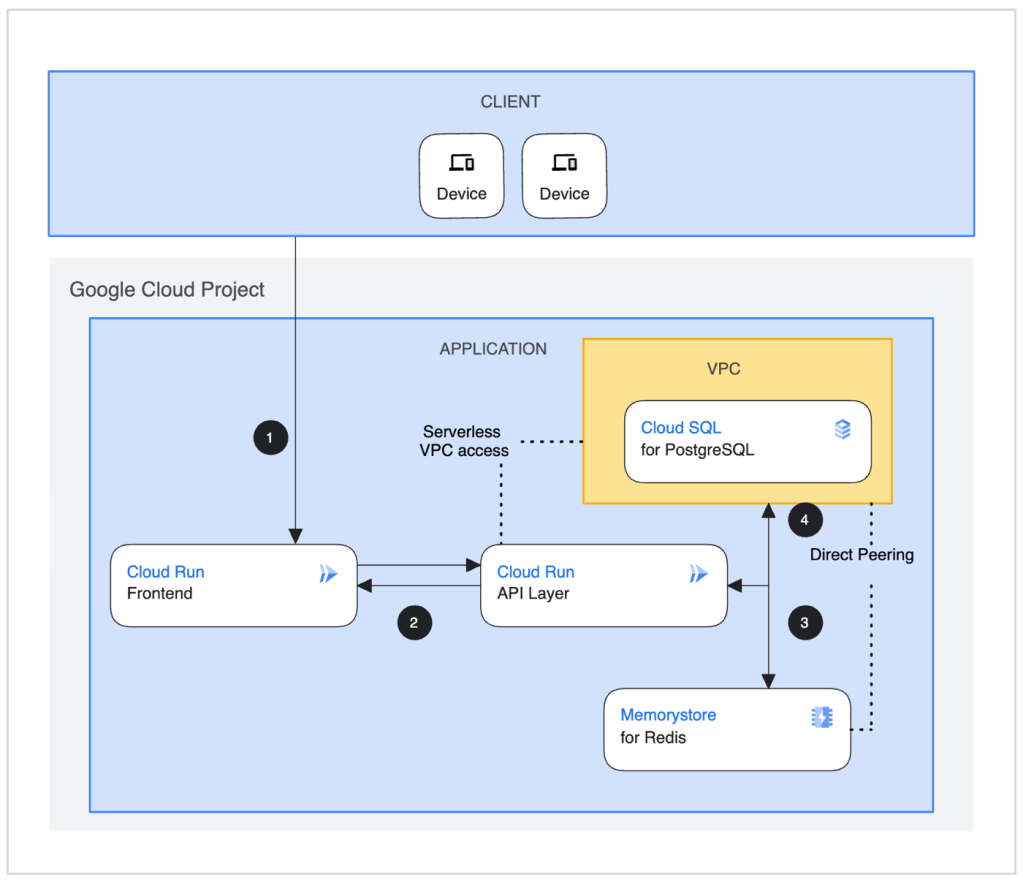
It’s a very solid architecture. I can take this diagram, send it to Google Bard, and ask how it measures up against core quality attributes I care about.
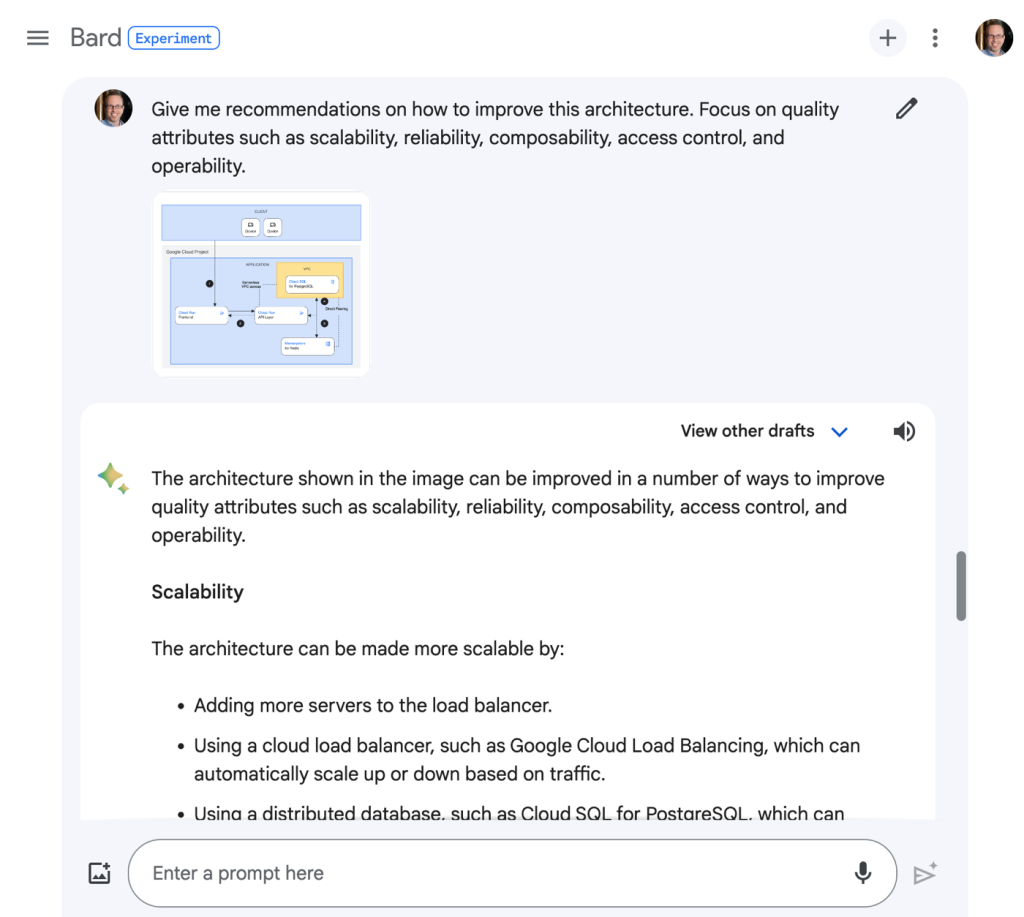
What came back from Bard were sections for each quality attribute, and a handful of recommendations. With better prompting, I could get even more useful data back! Whether you’re a new architect or an experienced one, I’d bet that this offers some fresh perspectives that would validate or challenge your own assumptions.
Validate architectures against corporate specifications
Through fine-tuning, retrieval augmented generation, or simply good prompting, you can give LLMs context about your specific environment. As an architect, I’d want to factor in my architecture standards into any evaluation.
In this example, I give Bard some more context about corporate standards when assessing the above architecture diagram.
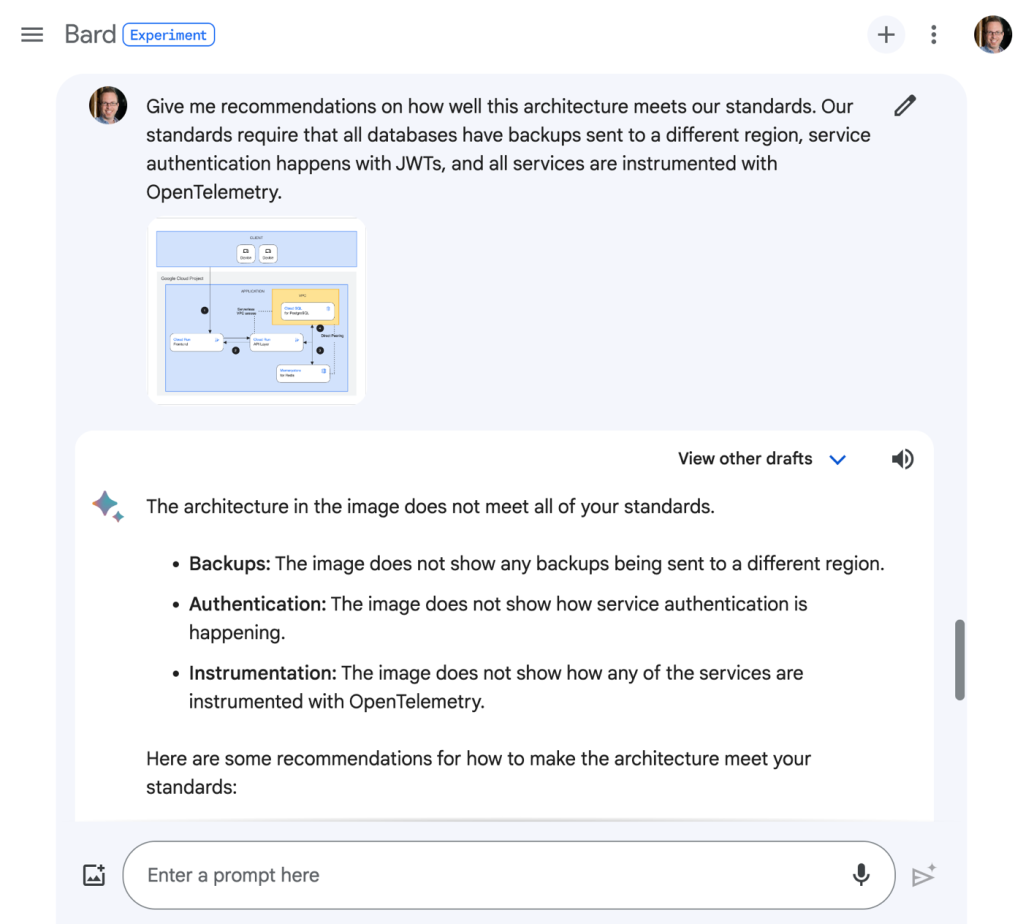
In my experience, architecture is local. Each company has different standards, choices of foundational technologies, and strategic goals. Asking LLMs for generic architecture advice is helpful, but not sufficient. Feeding your context into a model is critical.
Build prototypes to hand over to engineers
Good architects regularly escape their ivory tower and stay close to the builders. And ideally, you’re bringing new ideas, and maybe even working code, to the teams you support.
Services like Bard help me create frontend web pages without any work on my part. And I can quickly prototype with cloud services or open source software thanks to AI-assisted coding tools. Instead of handing over whiteboard sketches or UML diagrams, we can hand over rudimentary working apps.
Help me write sections of my architecture or design specs
Don’t outsource any of the serious thinking that goes into your design docs or architecture specs. But that doesn’t mean you can’t get help on boilerplate content. What if I have various sections for “background info” in my docs, and want to include tech assessments?
I used the new “help me write” feature in Google Docs to summarize the current state of Java and call out popular web frameworks. This might be good for bolstering an architecture decision to choose a particular framework.
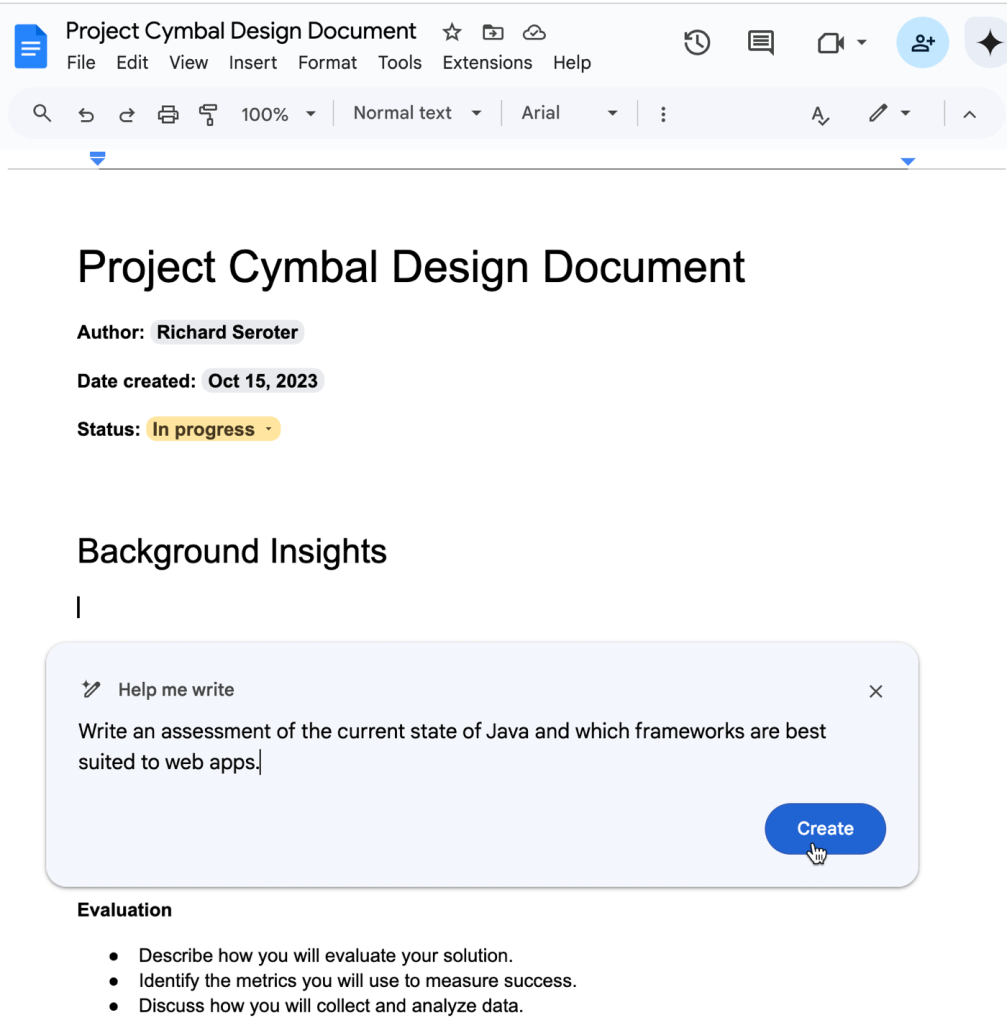
Quickly generating templates or content blocks may prove a very useful job for generative AI.
Bootstrap new architectural standards
In addition to helping you write design docs, generative AI may help you lay a foundation for new architecture standards. Plenty of architects write SOPs or usage standards, and I would have used LLMs to make my life easier.
Here, I once again asked the “help me write” capability in Google Docs to give me the baseline of a new spec for database selection in the enterprise. I get back a useful foundation to build upon.
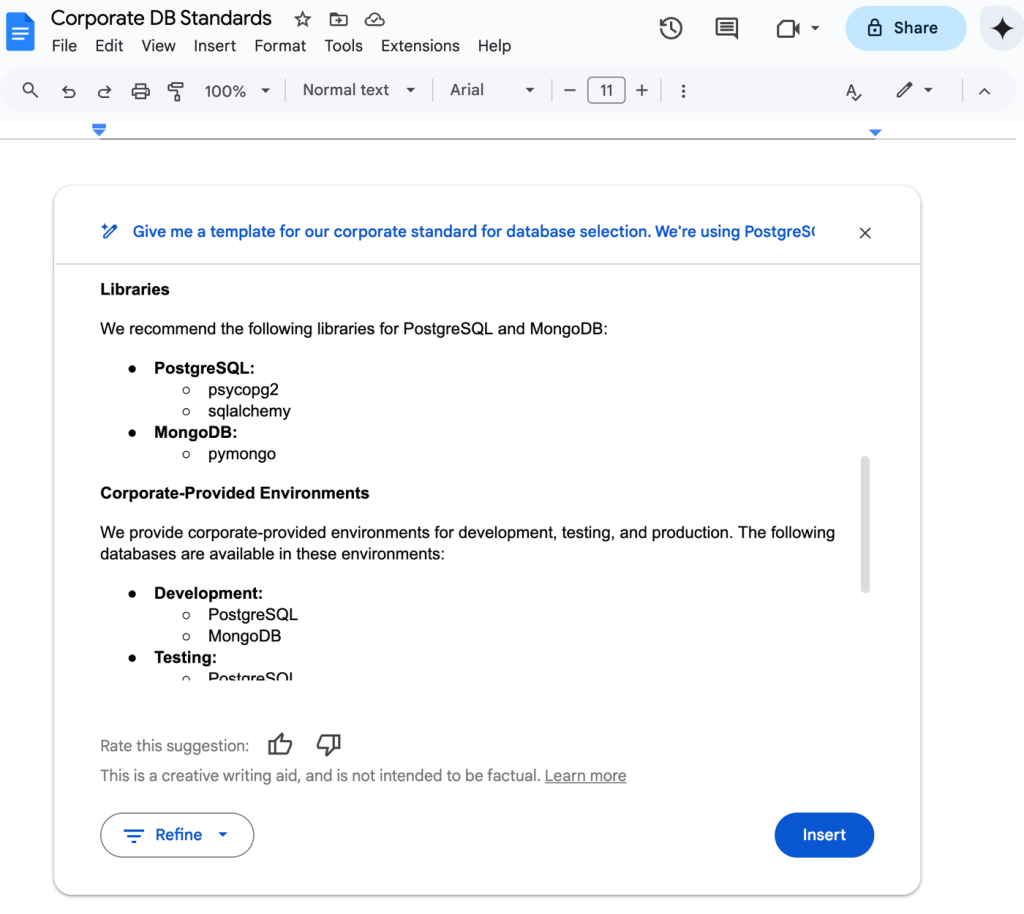
Summarize docs or notes to pull out key decisions
Architects can tend to be … verbose. That’s ok. The new Duet AI in Workspace does a good job summarizing long docs or extracting insights. I would have loved to use this on the 30-50 page architecture specs or design docs I used to work with! Readers could have quickly gotten the gist of the doc, or found the handful of decisions that mattered most. Architects will get plenty of value from this.
A good architect is worth their weight in gold right now. Software systems have never been more powerful, complicated, and important. Good architecture can accelerate a company or sink it. But the role of the architect is evolving, and generative AI can give architects new ways. to create, assess, and communicate. Start experimenting now!
Excellent article. Generative AI has potential to make everyone better in software industry and most of other industry as well.